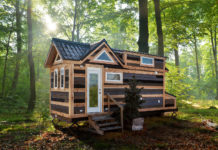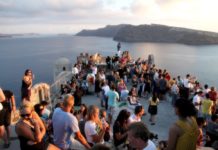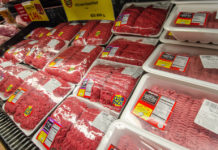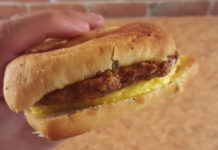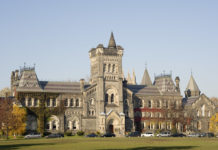You can read all you like about history, but there’s nothing quite like being able to see it, whether it’s a major historical event or just a snapshot of everyday life. Until someone invents a time machine, these rare photographs are as close as you can get to going back in time.
19. Building the Golden Gate
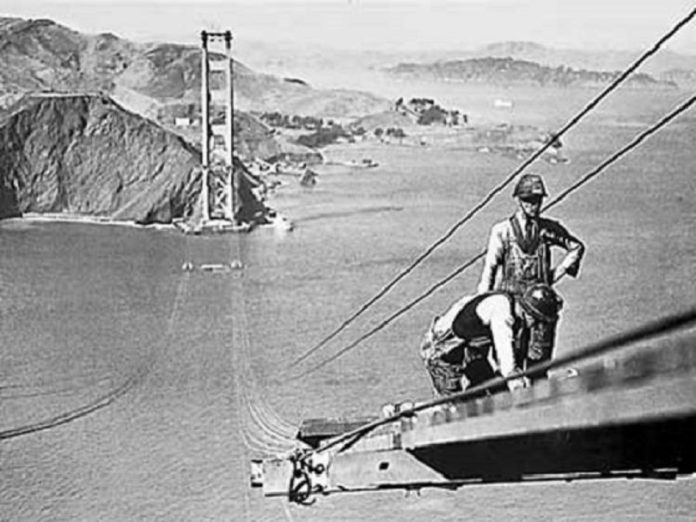
The Golden Gate Bridge reached its halfway point in 1935, when this photograph was taken. It’s hard to overstate the bravery of the construction workers, operating with minimal safety equipment above the treacherous icy waters of the Golden Gate strait. One safety precaution that was in place though was a movable net placed below the workers to save them from dropping into the water if they slipped, and this saved 19 workers’ lives – they named themselves members of the “Halfway to Hell” club. When the bridge was finally finished, it was the longest suspension bridge in the world, and it has only been superseded by the Verrazano Narrows Bridge (built in 1964).
18. Dorothy Counts
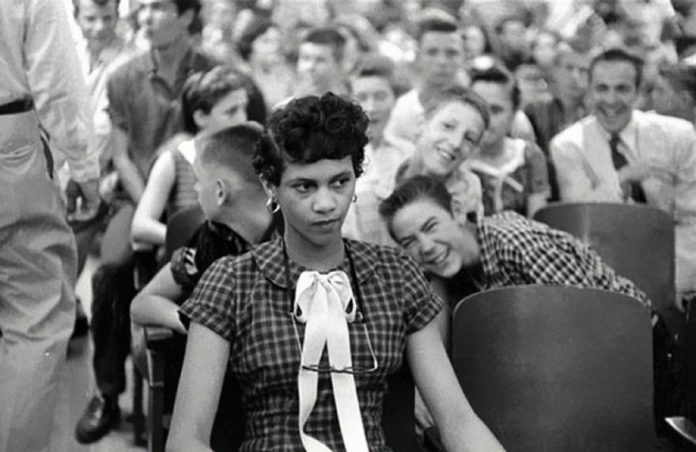
Dorothy was the first black girl to be admitted to a segregated all-white school anywhere in the USA. Here we can see a gang of white male bullies teasing and taunting her at the school, Harry Harding High School, in Charlotte in 1957.
17. Construction of the Eiffel Tower
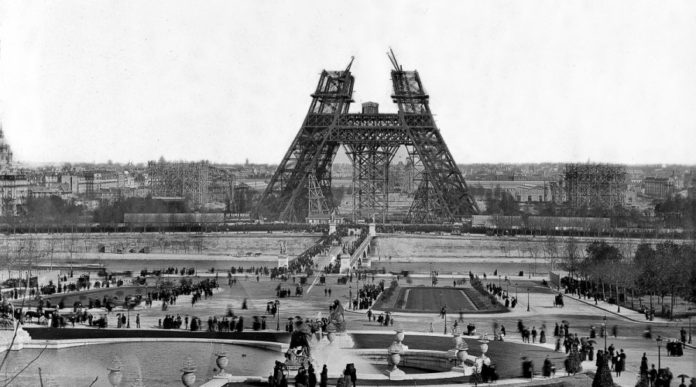
It’s hard to believe nowadays, but many Parisians were opposed to the building of the Eiffel Tower and wanted it dismantled straight after the 1889 World’s Fair for which it was built. The tower was built between July 1887 and April 1889. This picture shows it in 1888 when the first floor had just been completed.
16. Lunchtime in Construction
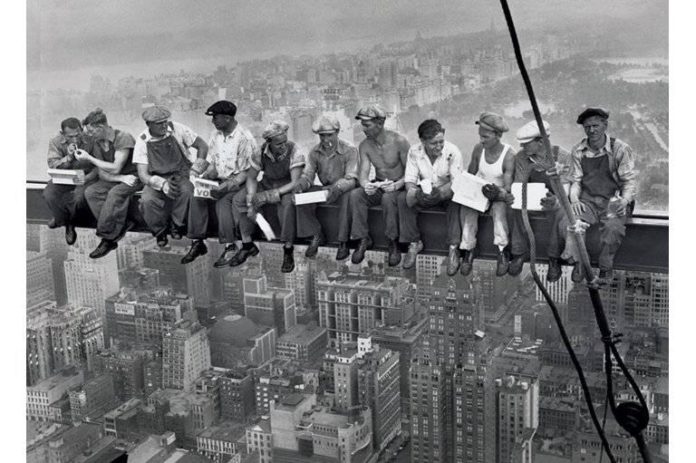
In this famous photograph, construction workers take a break for lunch nearly a thousand feet above ground level while working on what was initially called the RCA building (now the Comcast building) at 30 Rockefeller Plaza, New York City. This picture was taken in 1932 by Charles C Ebbets when the building was almost complete; these men are on the 69th floor of 70.
15. New York Subway
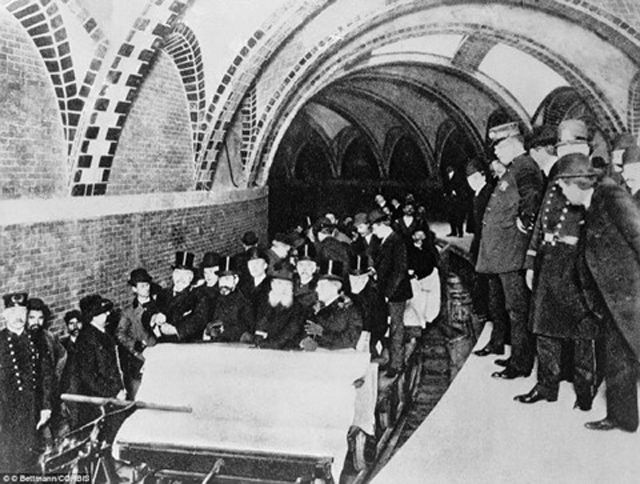
The New York subway system isn’t as old as some people might think, opening to passengers in 1904, on October 27 at 2:35 PM, to be precise. The mayor of the city, George McClellan, rode with selected passengers through a system that at the time only had 28 stations and 9.1 miles of track. Nowadays the subway is the world’s largest mass transit system, and the fares have changed a bit too – instead of today’s $2.75, back then it was just five cents a ride.
14. Frank Sinatra
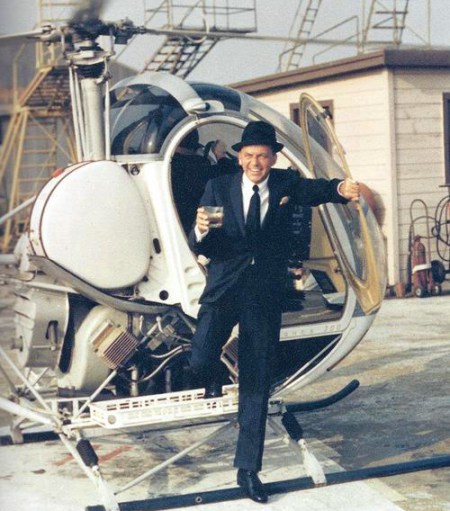
Ol’ Blue Eyes himself disembarking a helicopter in 1964 with, as usual, a drink in his hand. Most doctors agree that Sinatra was what we now call a functional alcoholic, drinking a bottle of whiskey most days. He had some discipline though, because when he was preparing to record an album he would lay off the booze and cigarettes for weeks to make sure his voice was in the best condition – but he would go straight back on them as soon as it was finished.
13. Original Planning Model for Mount Rushmore
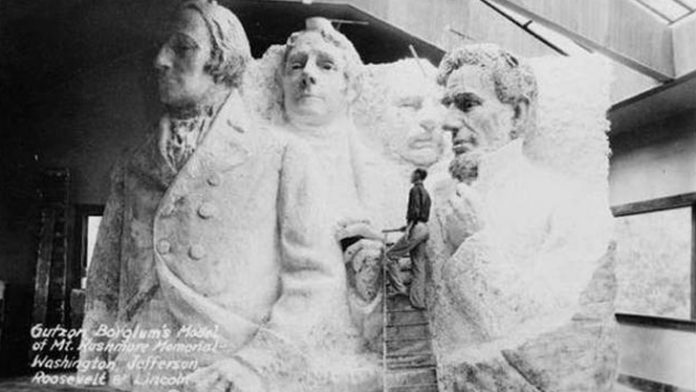
This mockup was made in 1941 to show what the now world-famous sculpture on Mount Rushmore would look like. The sculptor Gutzon Borglum, assisted by his son Lincoln, worked on the project in the Black Hills at Keystone, South Dakota, between 1927 and 1941. The work was continuously running into financial difficulty, and it’s amazing to think that the vast majority of the detail was created not with chisels but with dynamite blasting. The sculptor chose presidents Washington, Jefferson, Roosevelt (Theodore) and Lincoln, respectively representing America’s birth, expansion, development, and preservation. The sculpture sits in a memorial park covering 1200 acres and is nearly 6000 feet above sea level.
12. John F. Kennedy
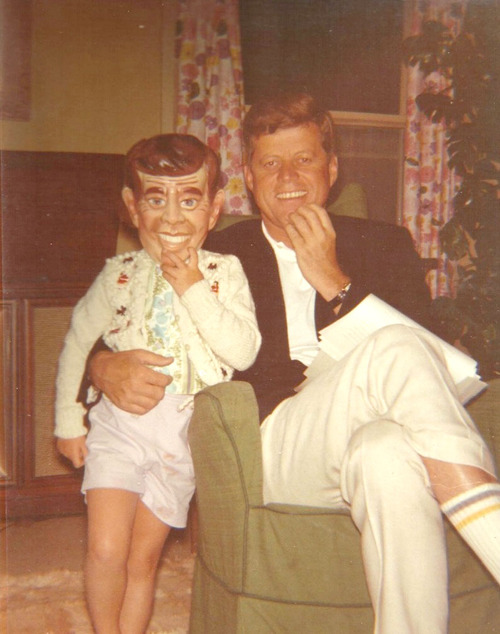
Here we see John F. Kennedy in a lighthearted moment, playing with his daughter Caroline, who has a Halloween mask of the president’s face. Just over a year later, on November 22, 1963, the President was assassinated in Dallas, Texas. He had made the trip to sort out arguments within the local Democratic Party, but as he drove through Dallas in an open-top car, waving to his fans, he was shot in the back of the head and died almost instantly. He was the last of the four US presidents who have been assassinated to date.
11. Whiteout in New York
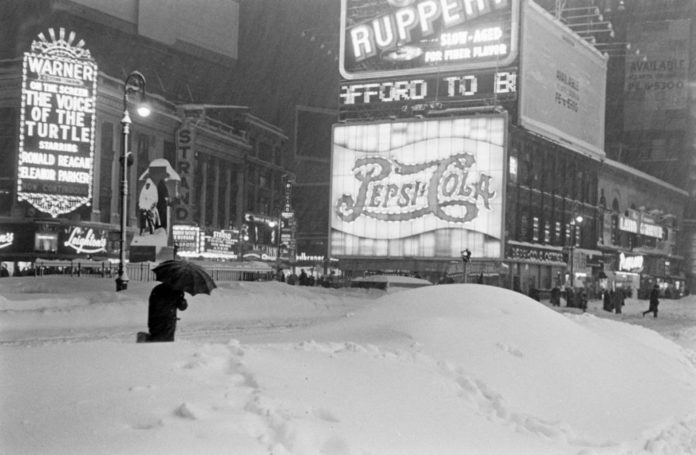
New Yorkers are used to snow in winter, but they had never seen anything like the blizzard that hit them in 1947. It started snowing at 3:20 AM, and by dawn, there was already 3 inches of snow on the ground. The snow simply didn’t let up, with more than two feet falling in 24 hours, freezing the commerce and transport systems of the city in their tracks.
10. Auto Polo, 1910
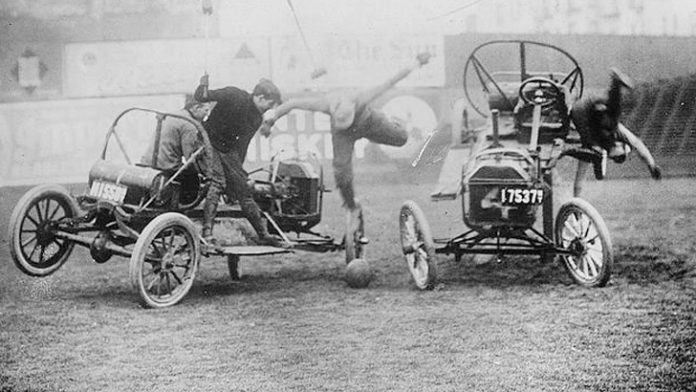
Automobile or auto polo pretty much mimicked the type of polo played on horseback, with the rather significant difference that instead of riding horses, competitors used automobiles. The sport did gain significant popularity in the USA and parts of Europe between 1911 and the start of the Great Depression, but it was extremely hazardous, with a number of competitors and spectators being killed, and the damage caused to the vehicles made it very costly to run.
9. The “Fat Man” Atomic Bomb in Transit
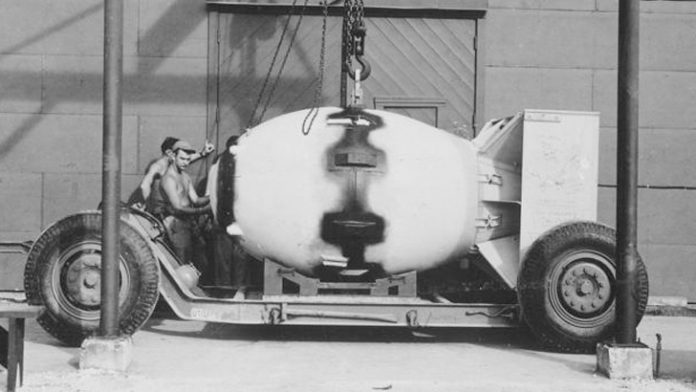
“Fat Man” was the codename for the bomb dropped by the American Air Force on Nagasaki on August 9, 1945. It was just the second nuclear bomb used in warfare, and fortunately (at least up to now…) the last. It was also only the third man-made nuclear explosion in history, following the Gadget test device and Little Boy, which had been dropped on Hiroshima three days earlier.
8. Chevrolet Impala
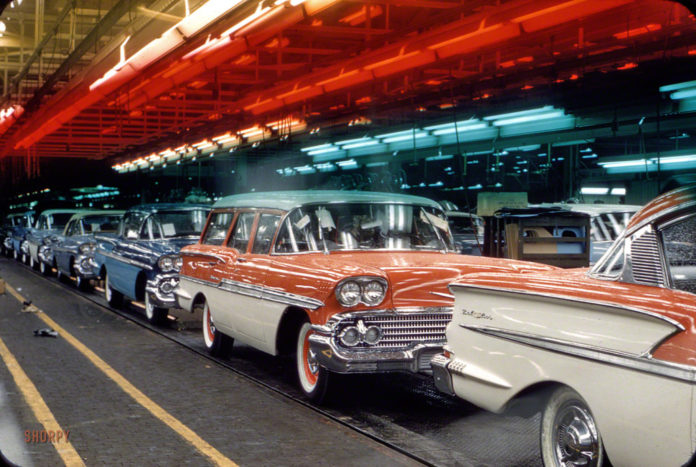
1958 was a big year for American auto manufacturer Chevrolet, when it introduced a number of new models, including the Belair and the Impala, shown here. The Impala became an instant classic and has been more or less continuous production ever since.
7. The Russian Spaceplane
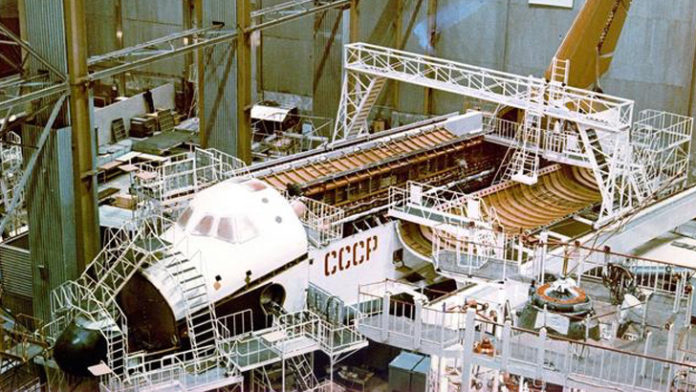
The Russian Buran spaceplane (the name means “blizzard” or “snowstorm”) was created as a rival to the US space shuttle program and was intended for the same purposes, carrying heavy payloads into space and returning to be reused. The aircraft did make one successful flight in 1988 – in fact at that time it was the only unmanned spacecraft to go into space and successfully return to earth – but the collapse of the Soviet Union cut off its funding, and although the program was never officially ended, no further development took place. The aircraft itself had a sad end, being completely destroyed in 2002 when its hangar collapsed.
6. The Oldest Surviving McDonald’s
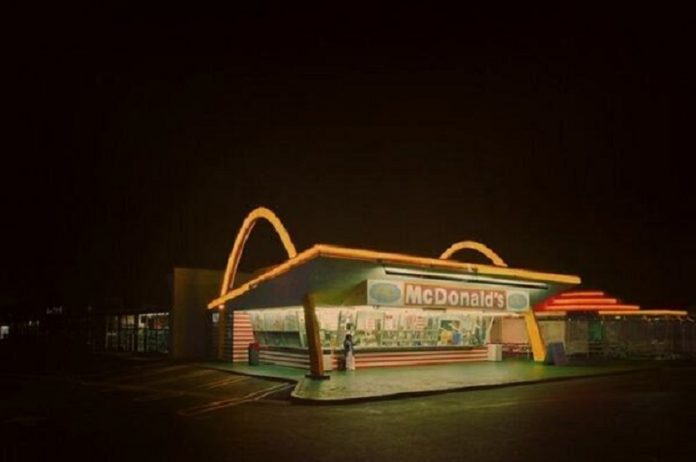
You might be tempted to believe that McDonald’s hamburger restaurants have been around as long as the USA itself, but in fact, they started in 1940. This outlet, at Lakewood Blvd., Downey, CA, is the oldest one still in operation serving the famous burgers, having opened in the summer of 1953.
5. Zeppelin over Washington
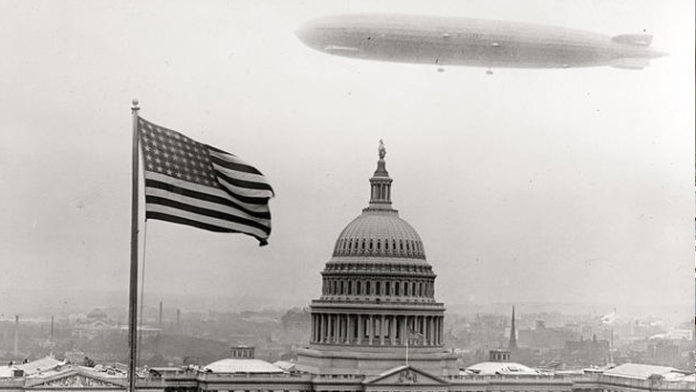
In the 1930s, before mass transit airliners, airships were seen as a viable alternative to transatlantic liner ships. In this photograph, we can see the Graf Zeppelin flying over Washington DC in October 1931. This machine provided the world’s first-ever transatlantic flight service, carrying a crew of 36 and 24 passengers, between 1928 and 1937. Unfortunately, after the catastrophic Hindenburg disaster in 1937 that killed 36 people, airships fell out of favor and airplanes have almost completely replaced them, despite occasional attempts at revival.
4. World War II Finally Ends
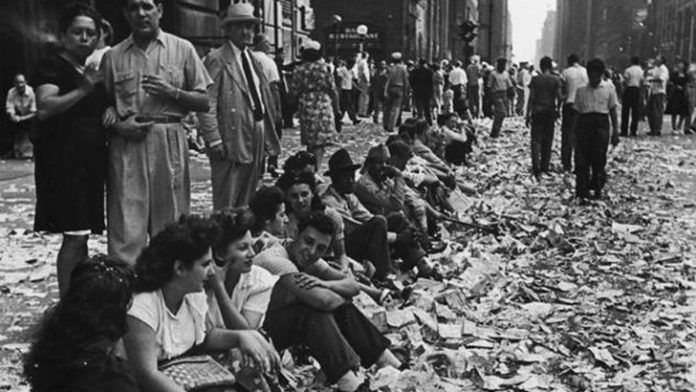
After four long years of war, New Yorkers could finally celebrate the fact that World War II was officially over. The electronic sign on the Times Tower, powered by 15,000 light bulbs, flashed out the message “Official – Truman announces Japanese surrender” on August 14, 1945, sparking delirious celebrations.
3. The First Space Flight Fatality
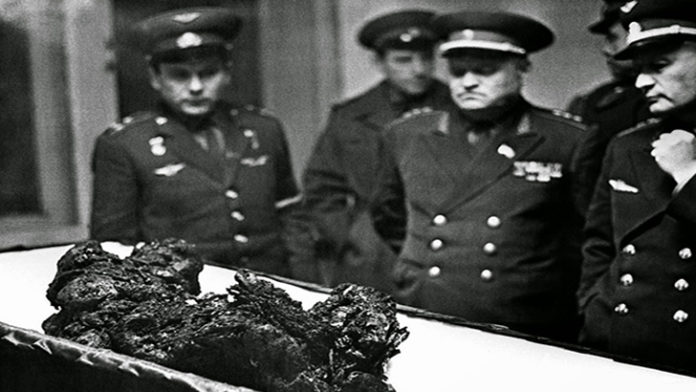
In 1964, Vladimir Komarov, a Soviet cosmonaut, test pilot, and aerospace expert, took command of Voskhod 1, the first space mission that carried multiple crew members. He achieved another first in 1967 by being the first man to fly into space twice on Soyuz 1, but the craft’s parachutes failed on landing and he was killed. This picture shows his burned remains in an open coffin, something he had insisted on before his death, because he knew that the pressure from the Soviet authorities to beat the Americans into space was going to cause deaths, and he wanted them to see the consequences.
2. The First Slide in Britain
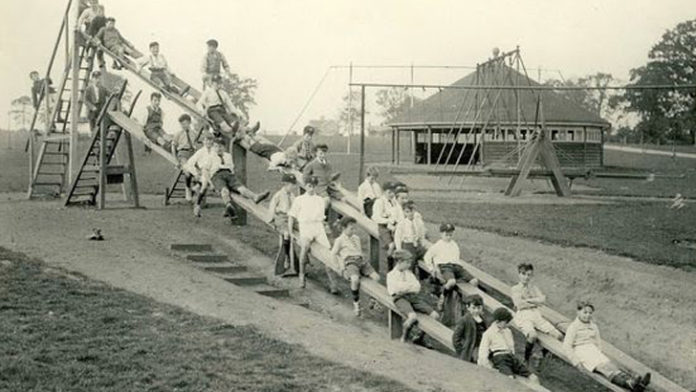
Charles Wicksteed (center) created Britain’s first slide, initially for his own park, but then he expanded to sell them across the globe. He created other types of playground equipment as well. The first park with this sort of play equipment was set up in Kettering in Northamptonshire. At first, girls and boys had separate slides, but it seems the segregation didn’t last long.
1. The Universal Car
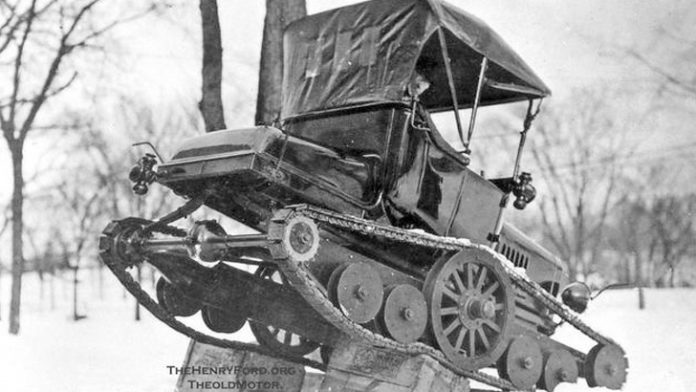
Henry Ford sold the Model T automobile between 1909 in 1927, and one of his names for it was the “universal car”. He called this because he said it was so revolutionary that every business and private household would have one. Most Ford dealerships, like this one, carried the slogan, which helped sell over 15 million automobiles, making it the most popular vehicle ever made.


